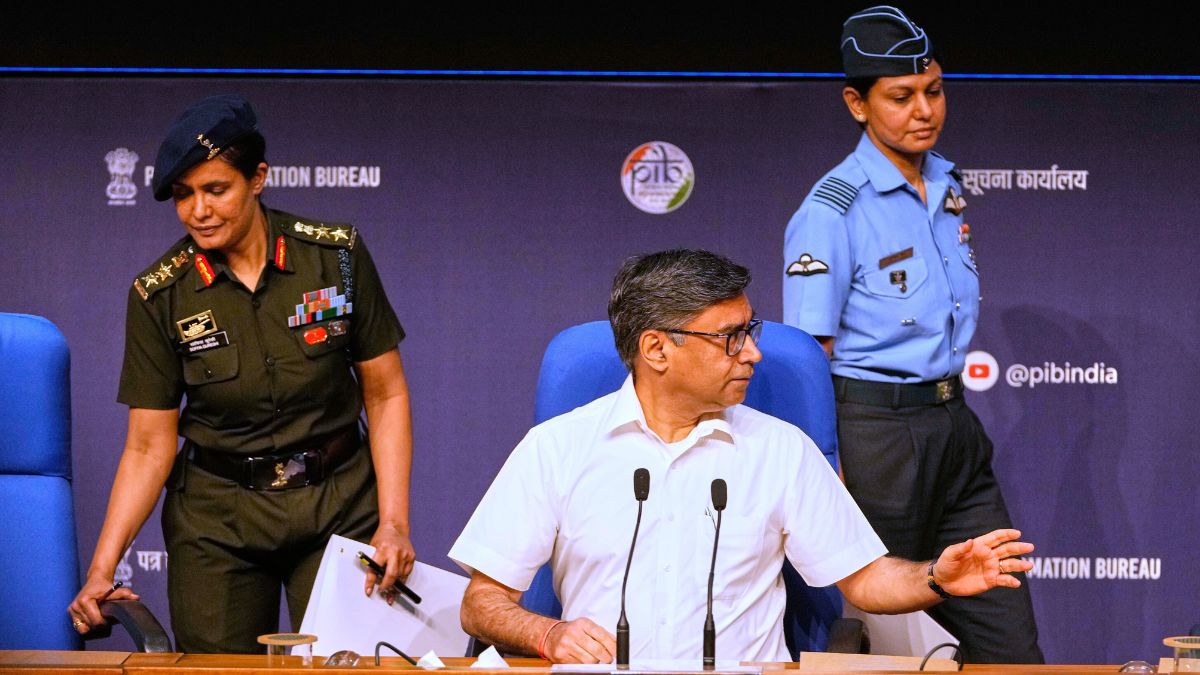Operation Sindoor: India’s military strike deep in Pakistan a careful note of warning
 Foreign Secretary Vikram Misri with Indian army officer Colonel Sofiya Qureshi, left, and Indian Air Force officer Wing Commander Vyomika Singh, right, arrive to address a press conference | AP
Foreign Secretary Vikram Misri with Indian army officer Colonel Sofiya Qureshi, left, and Indian Air Force officer Wing Commander Vyomika Singh, right, arrive to address a press conference | AP
Hybrid wars—employing both kinetic and non-kinetic force—are here and are there to stay. The official briefing at the National Media Centre in the national capital by India’s foreign secretary Vikram Misri, Indian Army’s Colonel Sophiya Qureshi and IAF’s Wing Commander Vyomika Singh following ‘Operation Sindoor’ executed in superb coordination on terrorist infrastructure in Pakistan Occupied Kashmir and deep inside Pakistan was brilliant on narratives.
The waves of precisely-aimed attacks in the intervening night of May 6-7 by Indian Army’s aerial assets including missiles and the IAF’s fighter aircraft on nine terror targets began at about 1.05 am and concluded at 1.30 am.
The farthest target was the Markaz Subhan Allah of the Jaish-e-Mohammad terror network in Bahawalpur in Pakistan’s Punjab province, about 100 km from the border.
That these attacks could be conducted inside Pakistan right under the nose of a military that has been on total alert since the Pahalgam massacre is demonstrative of Indian military capability.
With the April 22 terror attack in Pahalgam on hapless tourists clearly aimed at provoking communal discord, to have two female officers—of Hindu and Muslim faiths—address the media was a messaging that was not lost on the world. Besides depicting women at the forefront—veritable signs of a progressive society—it was also to underline that the country stands comfortably united in its nationhood.
But before that Pakistan’s Inter Services Public Relations—an integrated media wing of the Pakistan military establishment did go to town with questionable narratives of many IAF fighters being shot down.
The foreign secretary’s brief address did strike a quintessential note of warning to Pakistan when Misri said: “These actions were measured, non-escalatory, proportionate, and responsible. They focused on dismantling the terrorist infrastructure and disabling terrorists likely to be sent across to India.”
“Our intelligence monitoring of Pakistan-based terrorist modules indicated that further attacks against India were impending. There was thus a compulsion both to deter and to pre-empt”.
The fact that Misri chose to say that the attacks were “non-escalatory and proportionate” indicates India’s wish not to escalate it into a war which has the potential of transforming into a nuclear flashpoint with both countries having stacked sufficient stockpiles of nuclear weapons.
Col Qureshi said: “The selection of these targets for Operation Sindoor was based on credible intelligence inputs and role of these facilities in perpetrating the terror activities. The locations were so selected to avoid damage to civilian infrastructures and loss of any civilian lives.”
Wing Commander Singh added that no Pakistani military installations were targeted.
But at the same time, with Pakistan warning of retaliation may be indicative of the fact that things are only beginning to heat up between India and Pakistan.
India